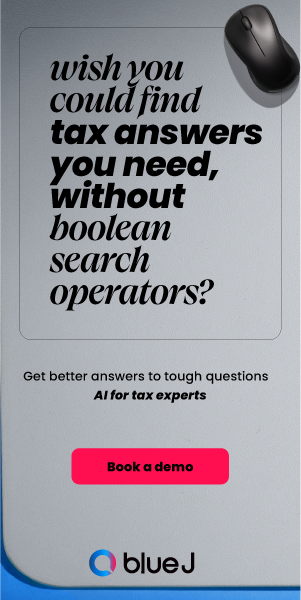Deducting life insurance costs: Why opportunity may be overlooked

In part two of a two-part series, why paragraph 20(1)(e.2) of the Income Tax Act may be missed, from Dale Barrett and Simon Townsend of Barrett Tax Law
Introduction
 |
An opportunity to appropriately deduct the cost of life insurance or premiums of a policy assigned to a lender could be missed for two reasons, write Dale Barrett and Simon Townsend of Barrett Tax Law. |
In part one, we discussed paragraph 20(1)(e.2) in the Income Tax Act (the Act), which allows an individual or business to deduct the reasonable cost of life insurance in the event it is used as collateral in a business financing agreement. We also discussed when this provision would be useful.
In part two, we examine why the provision may be overlooked and what makes it technical.
Why would paragraph 20(1)(e.2) be missed?
An opportunity to appropriately deduct the cost of life insurance or premiums of a policy assigned to a lender could be missed for two reasons. The first reason is that life insurance is personal in nature. Income deductions, according to the Act, can only be made when tied to the income earning process related to a business or property.
Life insurance premiums are almost always paid in order to ultimately derive a tax-free lump sum after a death — and not to earn taxable income. A borrower may not understand that using a life insurance policy as collateral changes some of its tax qualities.
The second reason that deducting the cost of life insurance may be overlooked is because of the technical nature of paragraph 20(1)(e.2). Since the provision is technical and buried in the Act, a sole proprietor or even a more sophisticated businessperson may simply not know of its existence or overlook it despite knowing of its existence.
Further, even if they were made aware of its existence, the provision and the methodology for its application may be daunting to many. Upon organizing a financing arrangement with a lender, a sophisticated lender may very well discuss the opportunity to deduct premiums of life insurance used as collateral under this provision.
However, upon review of the provision a company and its personnel — or even a sole proprietor — may feel more concerned about the Canada Revenue Agency (CRA) taking notice of (and possibly auditing) their deduction rather than being concerned with the financial benefit associated with the deduction. Indeed, although the deduction exists, it can be hard to do right.
What makes paragraph 20(1)(e.2) technical?
The provision can be viewed as unduly technical for numerous reasons. It is even technical compared to other provisions in the Act that are not immediately intuitive. Firstly, it requires that the interest in a life insurance policy be assigned to a "restricted financial institution." To decipher what that phrase means, one is required to visit the interpretation provisions of the Act.
Next, the interest payable in respect of the borrowing must be deductible "but for" certain provisions in the Act. This requires not only a reading and understanding of subsections 18(2), 18(3.1) as well as ss. 21 and 28, but also whether interest would be deductible "but for" those provisions with reference to other aspects of the Act.
Finally, the lending institution must "require" the life insurance collateral as part of the loan agreement; and the taxpayer is required to distinguish between deducting the "net cost of pure insurance" and the premiums, then make sure this amount is reasonable with regard to the loaned amount.
Failing any of the above (among even more technicalities), the CRA will have a valid claim.
Thus, its technical nature at face value may very well be why paragraph 20(1)(e.2), for at least some taxpayers, is a missed opportunity. This is unfortunate and need not be the case. Although on an initial reading the provision may seem prohibitive, a tax professional will generally be able to describe its application in the following simple terms: Paragraph 20(1)(e.2) is available where a life insurance policy is assigned to a lending institution to earn income, and that assignment is required by the institution for the financing.
Conclusion
This series explained the use of paragraph 20(1)(e.2) from a business's standpoint starting with the "key person" example; however it applies to any person who owns a life insurance policy, assigns it to a lender, and follows the requirements of the provision.
At minimum this provision should not be overlooked because of its technicality and because life insurance is an otherwise personal expense.
From a proactive perspective, it may be a strategy for someone — such as a sole proprietor or a partner in a partnership — seeking to earn additional income from a business or property and use the funds stored in a life insurance policy to do so. Either way, it is worthwhile speaking with a tax professional or conducting a thorough review of this provision to check the boxes that make paragraph 20(1)(b) otherwise prohibitive.
This is part two of a two-part series. Click here to read part one.
Dale Barrett is the managing partner of Barrett Tax Law, founder of Lawyers & Lattes Legal Cafe, author of Tax Survival for Canadians and the editor of the Family Law and Tax Handbook and a columnist for The Lawyer's Daily. He is also a frequent tax lecturer, primarily for accountants. Simon Townsend is an articling student at Barrett Tax Law.
This article was originally published on the Lawyer's Daily.










(0) Comments